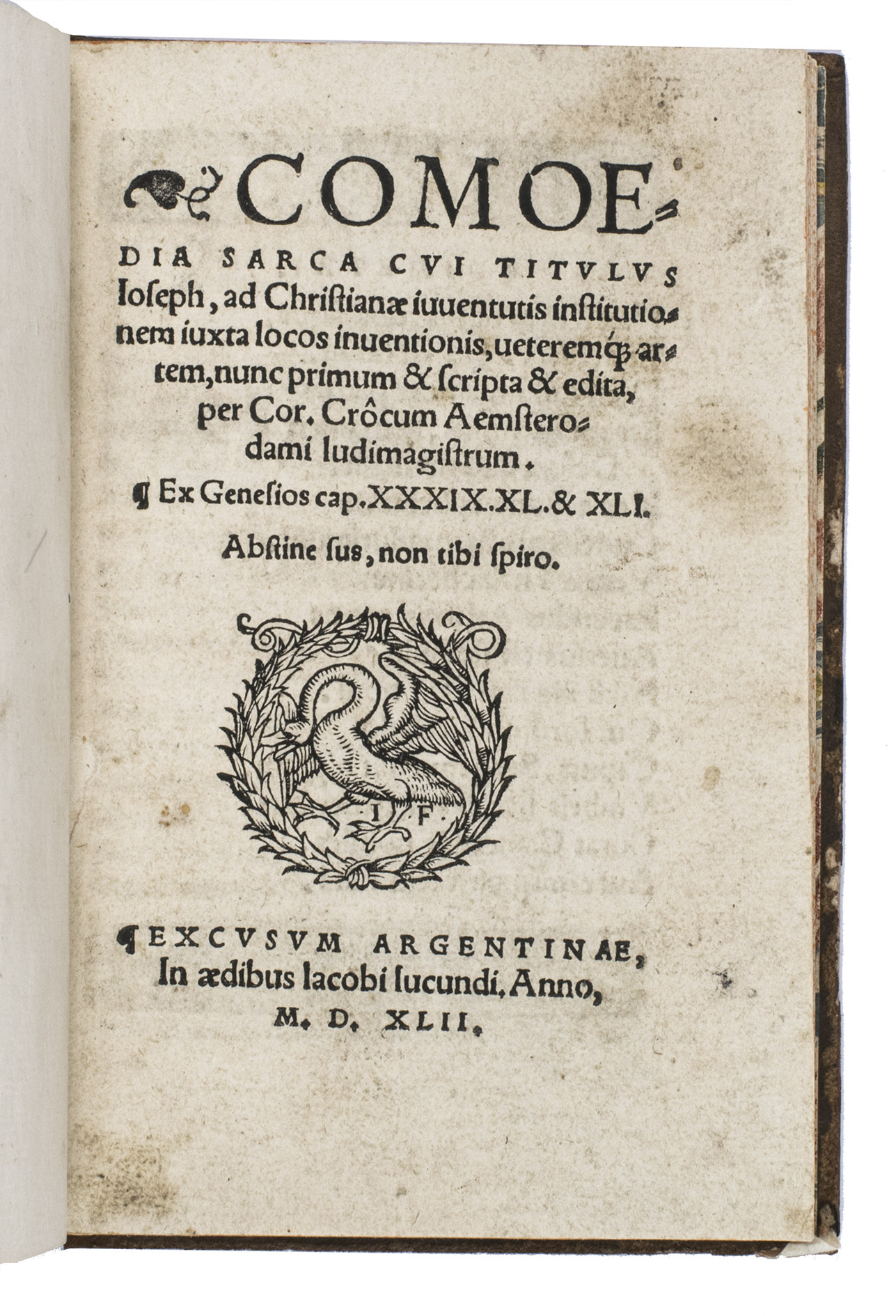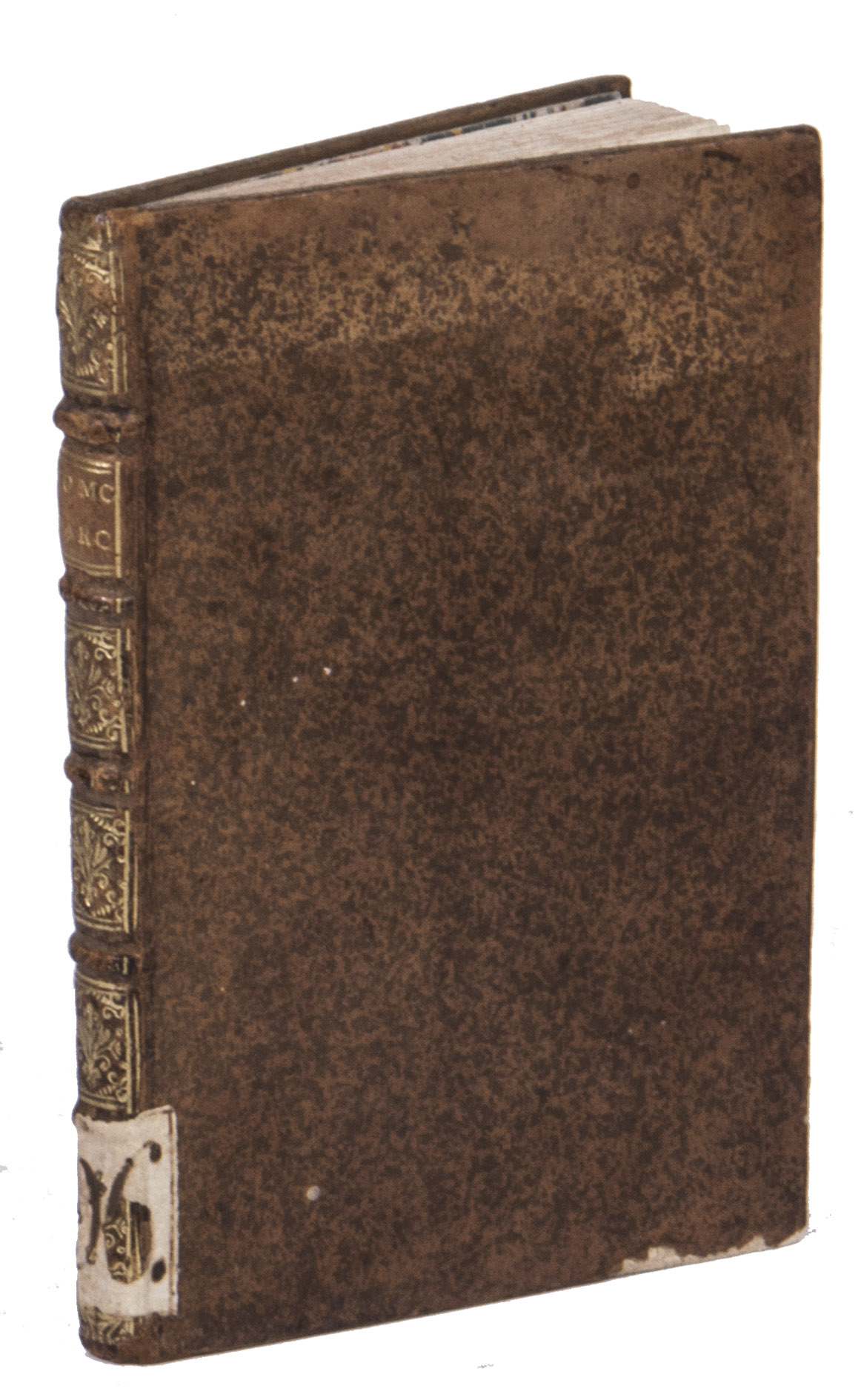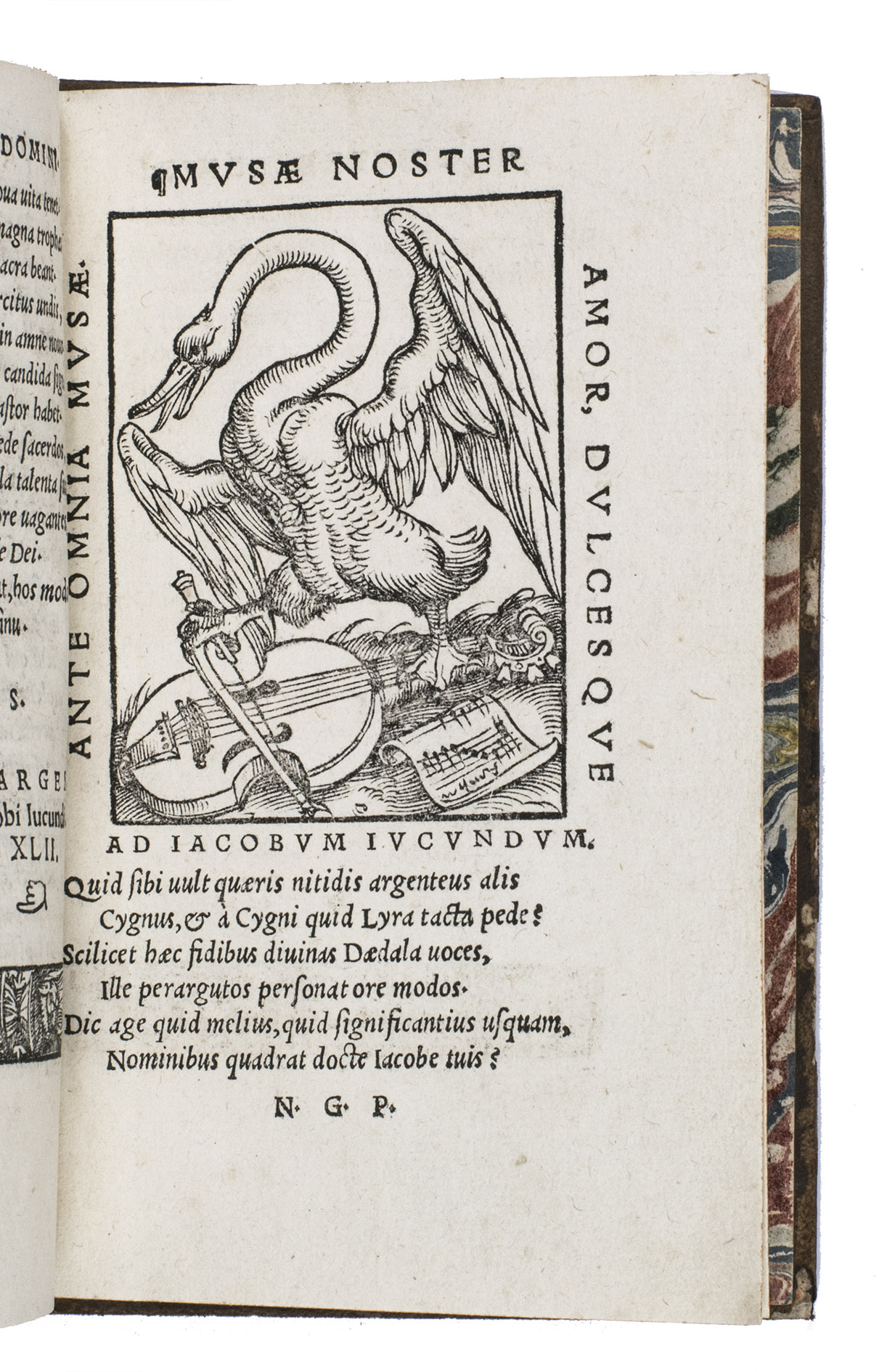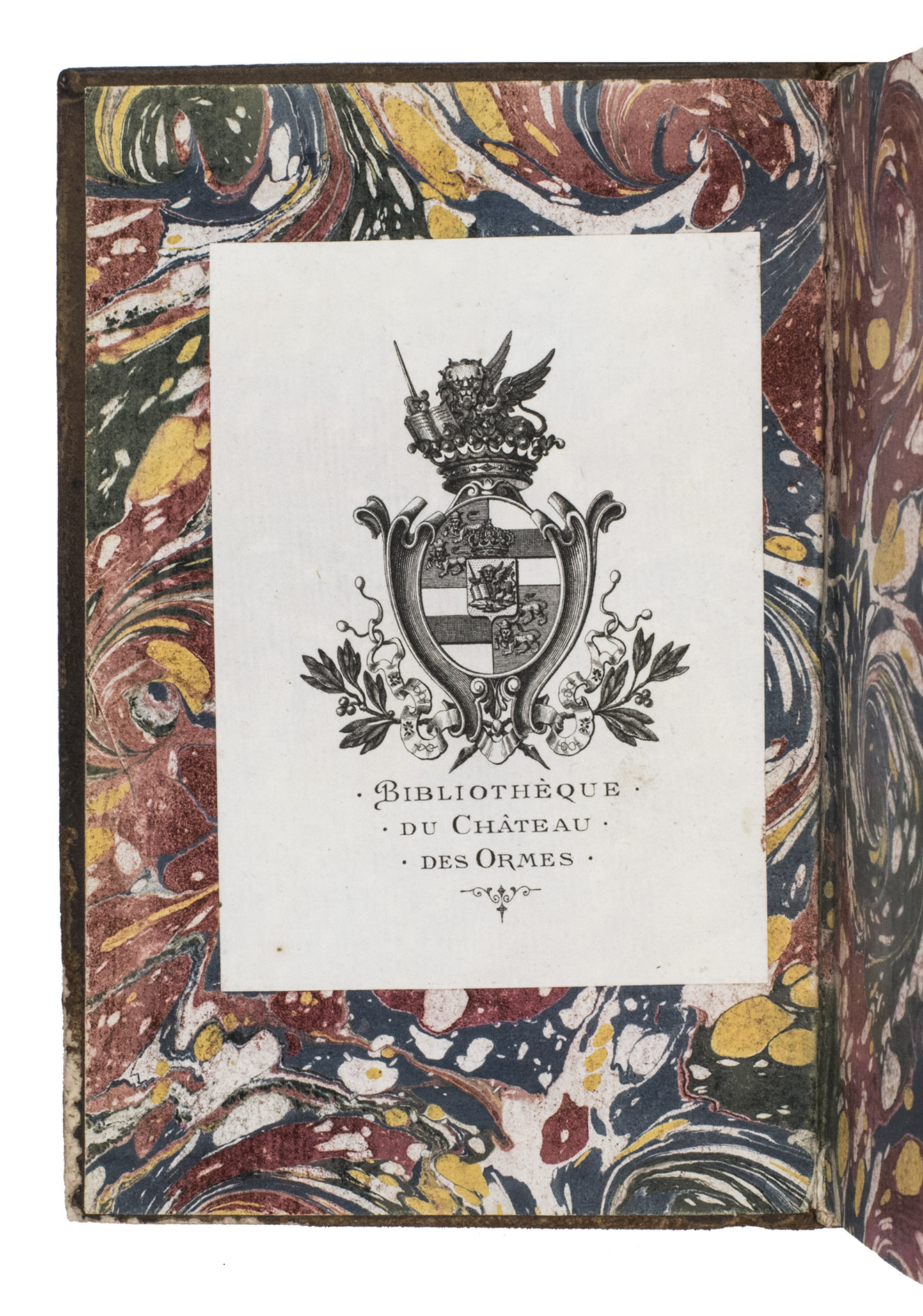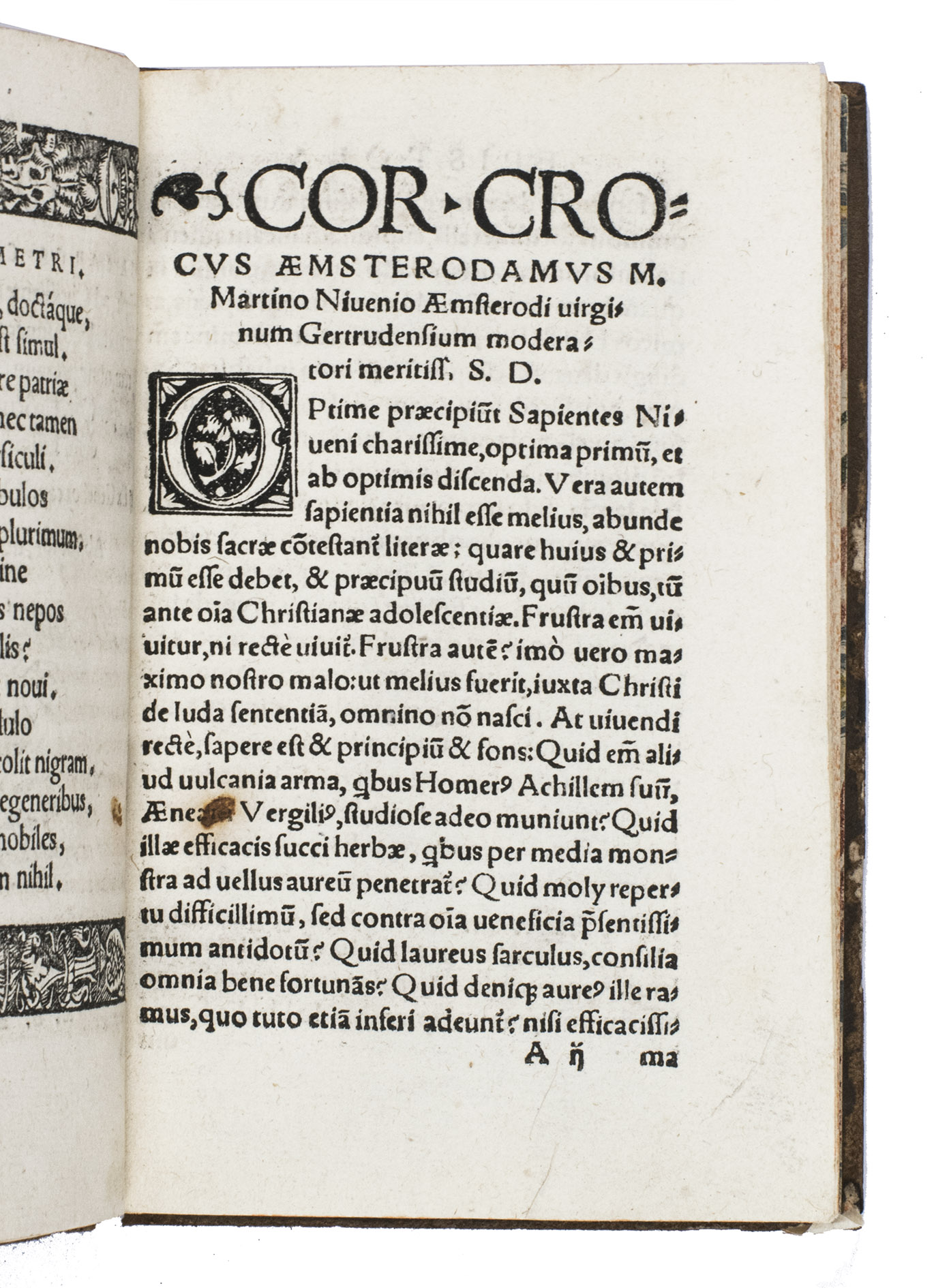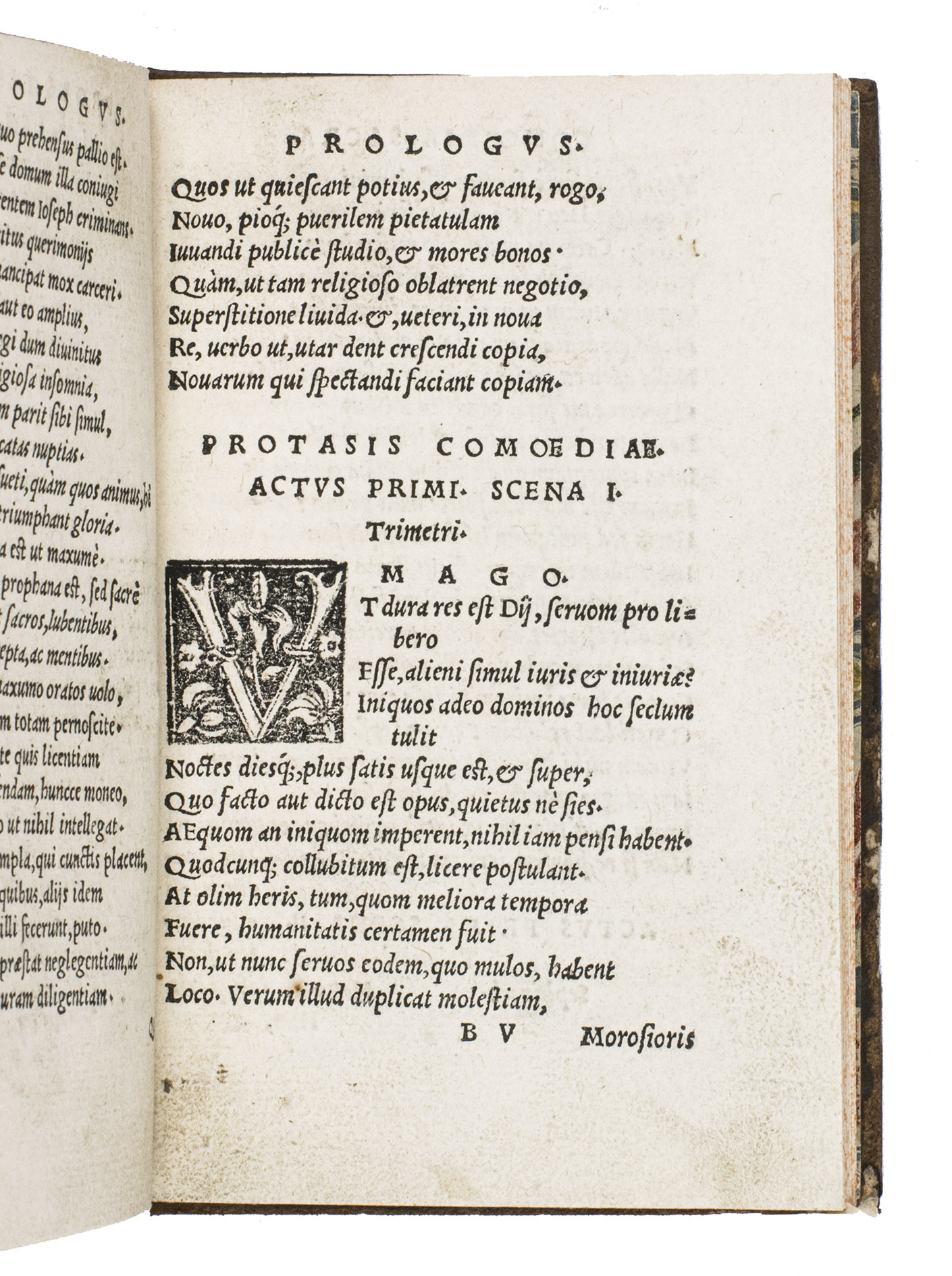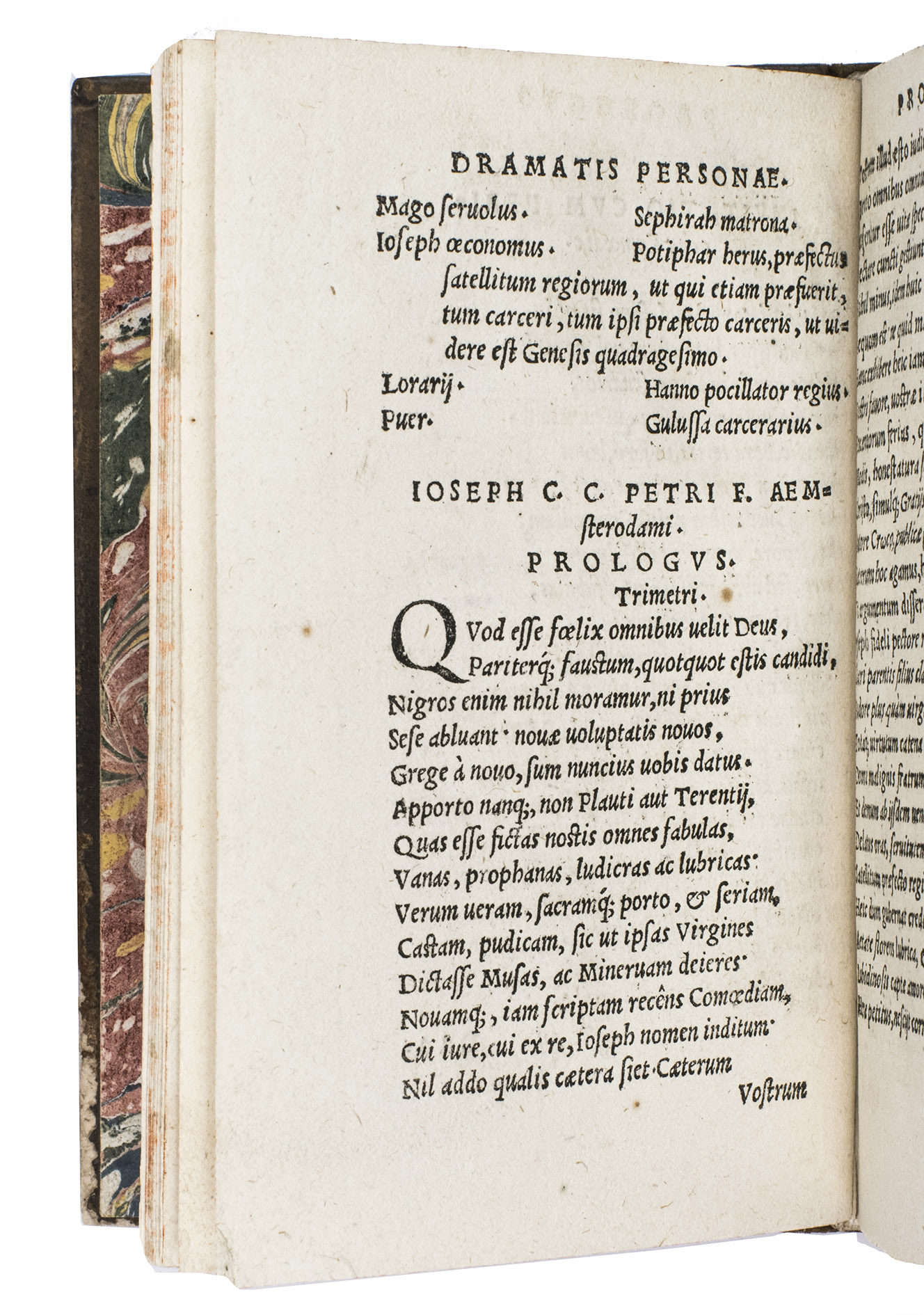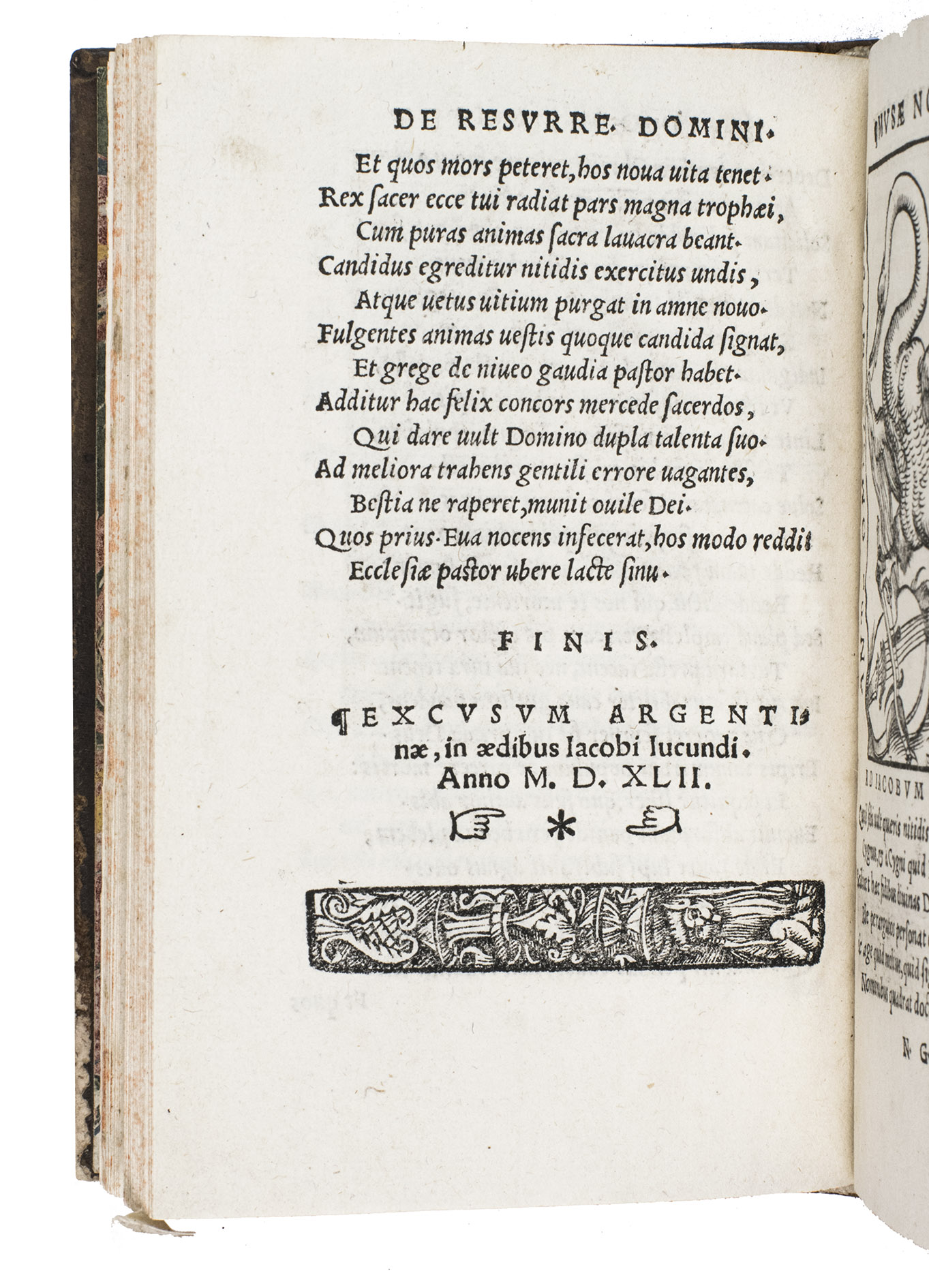CROCUS, Cornelius.
Comoedia sarca[!] cui titulus Joseph, ad Christianae iuventutis institutionem iuxta locos inventionis, veteremque artem, nunc primum & scripta & edita per Cr. Crôcum Aemsterodami ludimagistrum.
Strasbourg, Jacobi Jucundi [=Jakob Frölich], 1542. 8vo. With a printer's device on the title page and final page, two decorated woodcut initials, a woodcut headpiece, and three woodcut tailpieces. Early 18th-century gold tooled mottled brown calf. [40] ll.
€ 3,500
Second Strasburg edition of a popular "sacred comedy", or school play, written by one of the first and most important Neo-Latin poets and humanists of the Northern Netherlands. The work tells the story of Joseph in Egypt, and focuses in particular on Joseph's resistance to the advances of Potiphar's wife. The choice to dramatize this scene was seen as both innovative and controversial at the time. The play became incredibly popular, since 17 editions have been recorded. The present edition, however, is relatively scarce.
Sacred comedies are plays especially written for school children to provide moral and religious education. It was also intended to teach them proper Latin, and the art of appearing in public, since the plays were often performed. The genre was developed by humanists from the 1530s onwards, as they found drama to be a particularly effective method for teaching their ideals to students. However, they found the classical examples on the curriculum not quite suitable as they did not always adhere to humanist morals. As such, sacred comedies typically use the language, character, and humor from works by the Roman playwrights Terence (ca. 195-ca. 159 BCE) and Plautus (251-184 BCE), but combine them with biblical themes.
The present play was written by Cornelius Crocus (ca. 1500-1550), a rector at a gymnasium in Amsterdam, in 1535, and is an early example of the genre. Crocus was a devout catholic and even became a Jesuit at the end of his life. He likely wrote Joseph in response to the Reformation. It was first performed by his students at the Dam Square in Amsterdam in 1535, shortly after the Anabaptist Riot. This event, in which forty Anabaptists occupied the city hall on the Dam Square, affected the citizens of Amsterdam deeply. It was one of the first major clashes between the catholics and protestants in the city, and marked the end of the city council's tolerant attitude towards the "heretics". The present play may have been written and performed at this time to remind the local community of proper catholic virtues.
The play was first published by Joannes Steelsius in Antwerp in 1536. This edition included a note which reminded readers of the Anabaptist Riot in Amsterdam. The play then received 16 more editions before 1549, all published in France, Germany, and the Southern Low Countries. The present edition is the second from Strasburg and the 11th overall.
With the bookplate of the Bibliothèque du Château des Ormes mounted on the front pastedown. The edges and corners of the boards are somewhat scuffed, the boards are somewhat rubbed. The title page is slightly soiled, a small tear in the outer margin of leaf [33]. Otherwise in good condition. USTC 622917 (5 copies); VD16 C 6047; cf. Spies, M. A chaste Joseph for schoolboys. In: Education and learning in the Netherlands 1400-1600 (2004), pp. 223-233; Wouters, D., Comoedia sacra and comedia nueva: defending innovation in comedy from the northern humanists to Lope de Vega. In: Medievalia et Humanistica, 47 (2023), pp.19-39.
Related Subjects:
